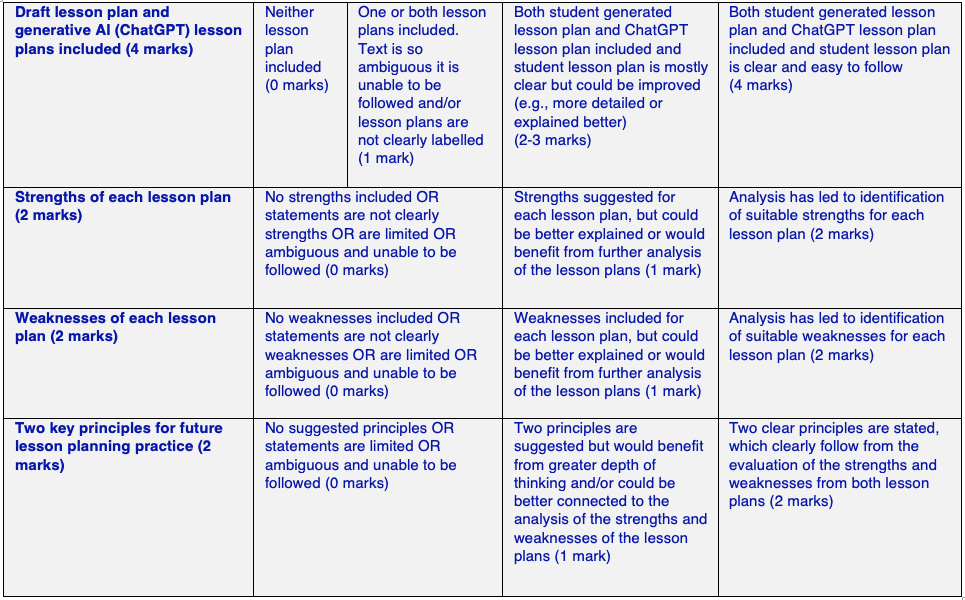Using AI to generate lesson plans
Assessment Description: Using ChatGPT to generate contextualised lesson plans as a basis of comparison and critique with a personally generated lesson plan. This task was to support beginning teachers when learning about lesson planning.
Assessment Example: “In this assessment, you will use generative artificial intelligence (AI) to generate a lesson plan and brainstorm ideas during planning only. You cannot cite AI or use AI to write text for your submission. Any use of generative AI must be appropriately acknowledged (see Learn HQ).”
Unit Context: EDF2063 is a large core unit that all pre-service teachers in the Bachelor of Education undertake. The unit focuses on teaching students about the principles of effective planning, which includes lesson and unit planning in primary and secondary school contexts.
Learning Objectives: To critically reflect on their planned lesson, using a lesson plan created by AI as the basis for the critique.
Which AI tools & why: ChatGPT was used to generate a lesson plan of the same duration and learning intention as their personally created lesson plan (applicable for years F to 12). This would otherwise have been difficult, as lessons plans of such specificity are hard to find.
How is task & AI structured/scaffolded: The Task was split across 2 assessment tasks (see image below). AT1 was to create a lesson plan and compare with the AI generated lesson plan (on the same learning intention). Compare and contrast the lesson plans, identify strengths and weaknesses of both. Then, for AT2, they needed to improve the original lesson plan, teach it to peers, get feedback and modify the lesson plan again and justify why they planned the lesson in that way and explain the changes they made between iterations.
What support/guidance was needed for students: How to use ChatGPT, scaffold for critique of the lesson plans, guidelines about presentation of the submission.
2-3 things that worked well: AI-the generated plan provided a similar context for comparison which was otherwise difficult to source; Provided an introduction to AI and how it could be used productively; Modelled reflective practice; Encouraged PSTs to create the lesson plan in advance; Supported reflection on their lesson plan.
2-3 things that need improvement: Not all students knew how to use ChatGPT; Not all followed the instructions; Didn’t know how to generate an AI declaration; Didn’t get their marks back before they taught their lesson in Week 5; Some reflections were summaries of the plan, or superficial/practical observations, rather than interrogation of the similarities and differences or substance of the plans - so need to support better with prompts for critical comparison and reflection; Needed more clarity around what to do with their initial lesson plan after comparing with the AI plan yet before they taught the plan to peers.
Things to consider when adapting to your context: AI provided tangible examples of lesson planning which we were unable to source from teachers in schools due to the very specific learning intentions and range of discipline areas in the student cohort. In addition, the lessons in this task were 20 minutes, which is not common in schools as lessons are usually closer to an hour. So, if you are looking for a way generating examples of discipline-specific practices to encourage critical reflection on student generated materials, this approach was really useful.
Example of our marking criteria:
1. Draft lesson plan and generative AI (ChatGPT) lesson plans included (4 marks)
2. Strengths of each lesson plan (2 marks)
3. Weaknesses of each lesson plan (2 marks)
4. Two key principles for future lesson planning practice (2 marks)
Marking rubric


